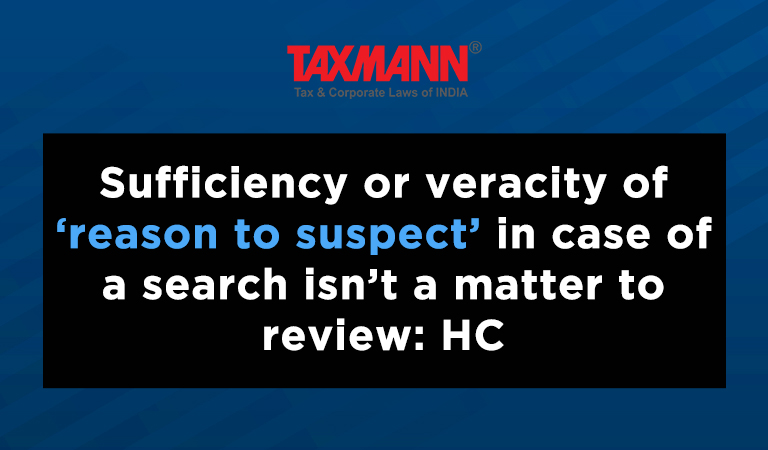Sufficiency or veracity of ‘reason to suspect’ in case of a search isn’t a matter to review: HC
- Blog|News|Income Tax|
- 2 Min Read
- By Taxmann
- |
- Last Updated on 18 November, 2022
Case Details: Chandran Somasundaram v. PDIT - [2022] 145 taxmann.com 6 (Madras)
Judiciary and Counsel Details
-
- Dr Anita Sumanth, J
- R.V. Easwar, P.S. Raman, V. Ayyathurai, A.R.L. Sundaresan, Satish Parasaran, Senior Counsel’s Lakshmi Narayan, Velmurugan, Vishnu Mohan, N.R.R. Arun Natarajan, Salai Varun & Karthik Lakshmanan for the Petitioner.
- A.P. Srinivas, Sr. Standing Counsel & A.N.R. Jayaprathap, Jr. Standing Counsel for the Respondent.
Facts of the Case
The instant writ petition was filed challenging the search conducted under section 132 and consequential proceedings thereafter. The assessee contended that he and his family members weren’t permitted to sleep and were made to sit throughout the day and night for 5 days.
One of the daughters of the directors suffered seizures on account of lack of sleep. Further, the sister of one director had suffered a spike in her sugar levels on account of the stress of the proceedings. However, she was granted permission to leave only after the elapse of one hour and upon the intervention of the doctors. This constitutes inhuman treatment contrary to all cannons of human rights.
Further, the proceedings constitute a roving enquiry and there was no ‘information’ in the possession of the Income-tax Department that would justify the invocation of powers under section 132.
High Court Held
The Madras High Court held that the files relating to the recording of ‘information’ and ‘reasons to believe’ were called for and it was found that the AO had recorded cogent reasons for the initiation of the search itself.
The records reveal that the AO has had information in his possession to lead to the belief that action under Section 132 was warranted. Reasons to believe had been recorded as have the reasons to suspect, based upon which the premises of connected entities/persons have been searched.
The procedure to be followed in noting the information received as well as the recording of reasons is in line with the requirements of the Income-tax Act. The sufficiency or the veracity of the same is not a matter for review by the High Court.
As far as inhuman treatment was concerned, AO stated that all necessary measures were taken to address the medical issues that were projected by the assessee and their family members. However, the assessee may also choose to approach the human rights authority seeking redressal of its grievances.
Disclaimer: The content/information published on the website is only for general information of the user and shall not be construed as legal advice. While the Taxmann has exercised reasonable efforts to ensure the veracity of information/content published, Taxmann shall be under no liability in any manner whatsoever for incorrect information, if any.

Taxmann Publications has a dedicated in-house Research & Editorial Team. This team consists of a team of Chartered Accountants, Company Secretaries, and Lawyers. This team works under the guidance and supervision of editor-in-chief Mr Rakesh Bhargava.
The Research and Editorial Team is responsible for developing reliable and accurate content for the readers. The team follows the six-sigma approach to achieve the benchmark of zero error in its publications and research platforms. The team ensures that the following publication guidelines are thoroughly followed while developing the content:
- The statutory material is obtained only from the authorized and reliable sources
- All the latest developments in the judicial and legislative fields are covered
- Prepare the analytical write-ups on current, controversial, and important issues to help the readers to understand the concept and its implications
- Every content published by Taxmann is complete, accurate and lucid
- All evidence-based statements are supported with proper reference to Section, Circular No., Notification No. or citations
- The golden rules of grammar, style and consistency are thoroughly followed
- Font and size that’s easy to read and remain consistent across all imprint and digital publications are applied








 CA | CS | CMA
CA | CS | CMA


